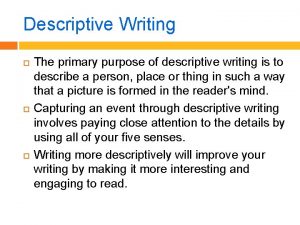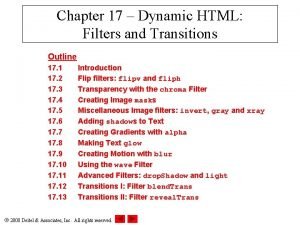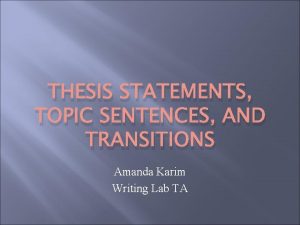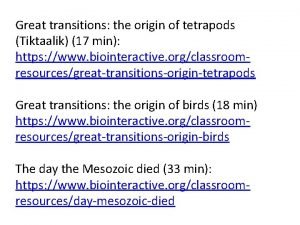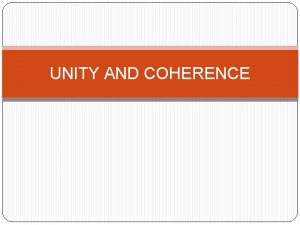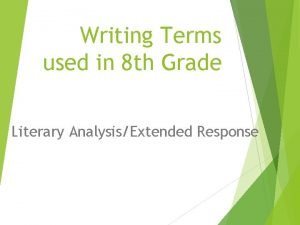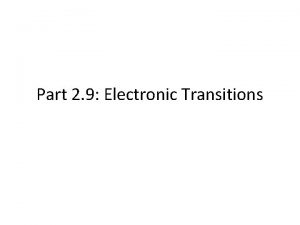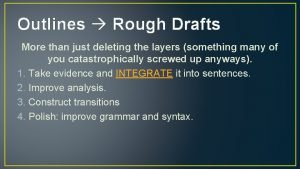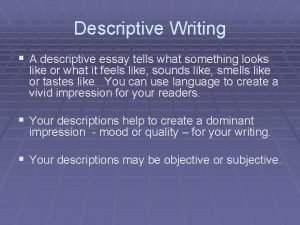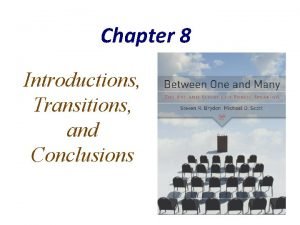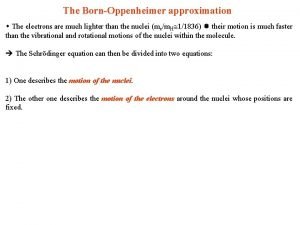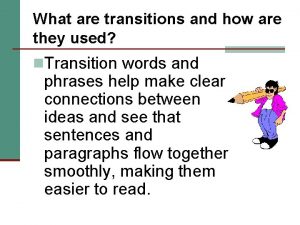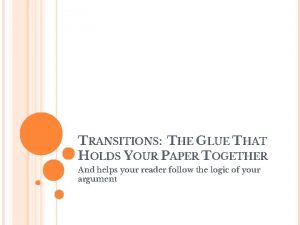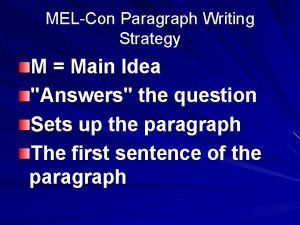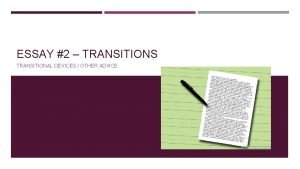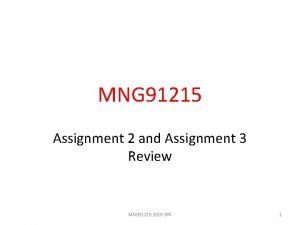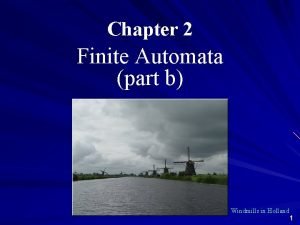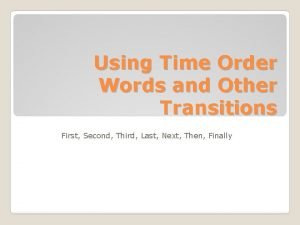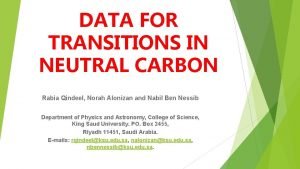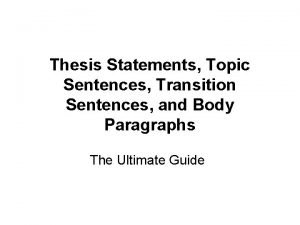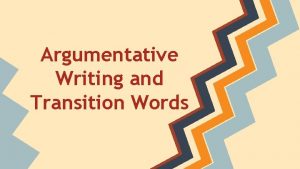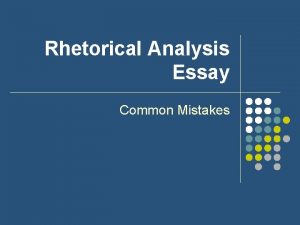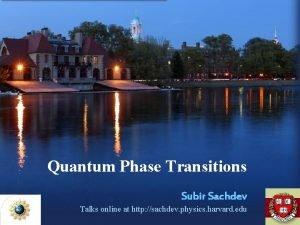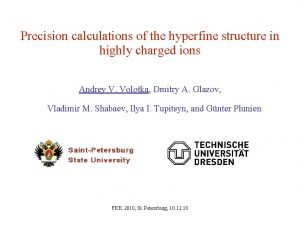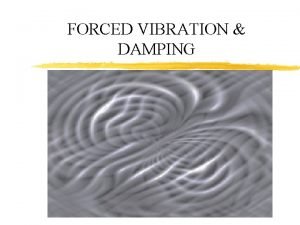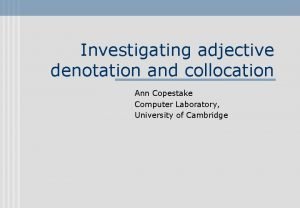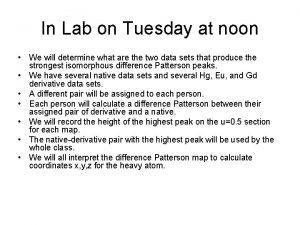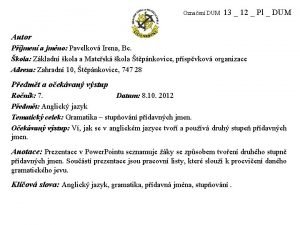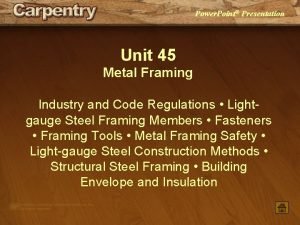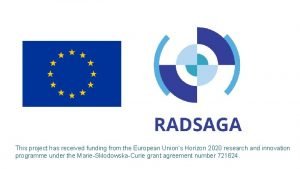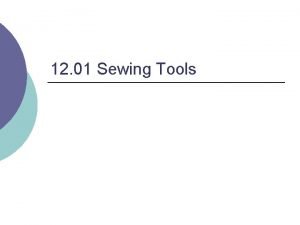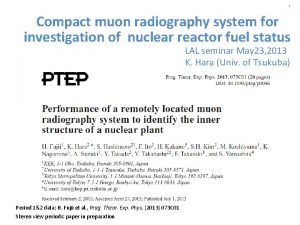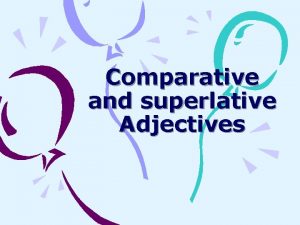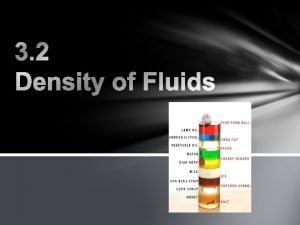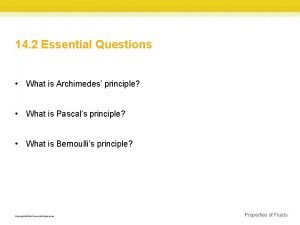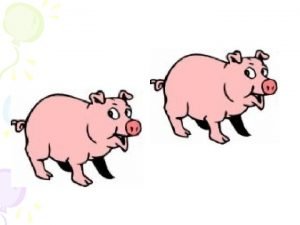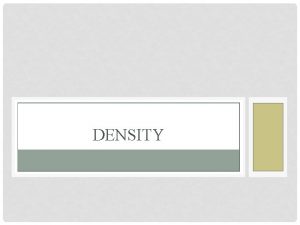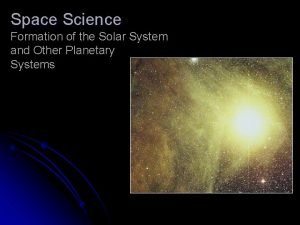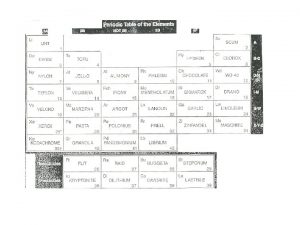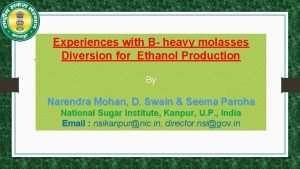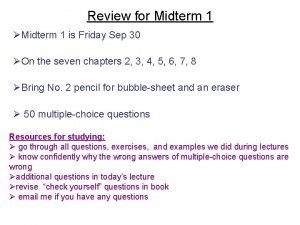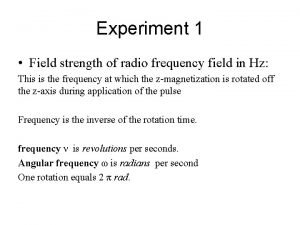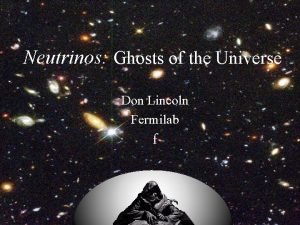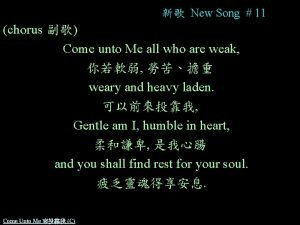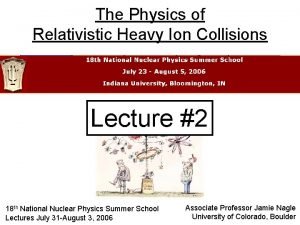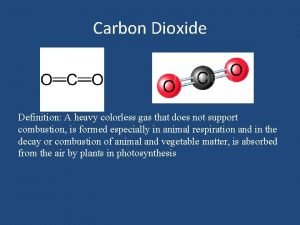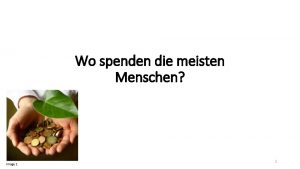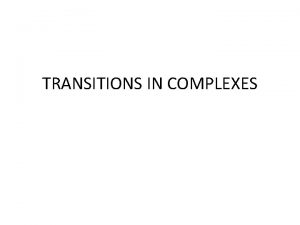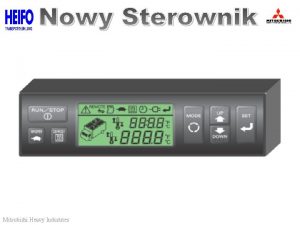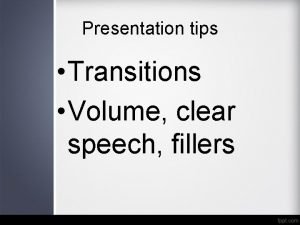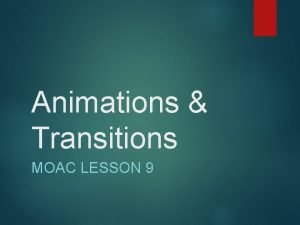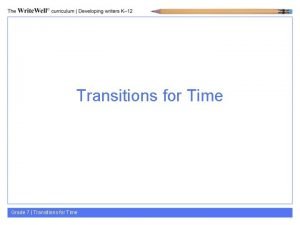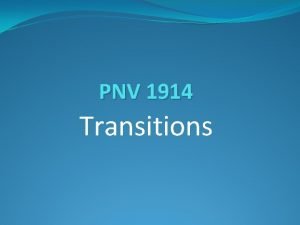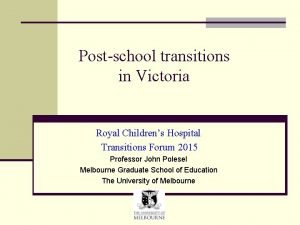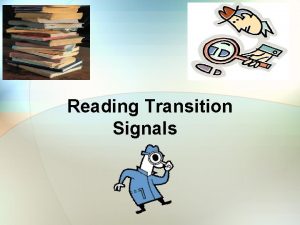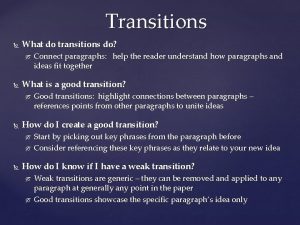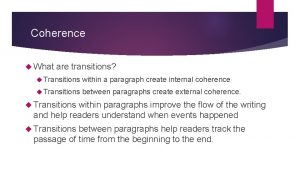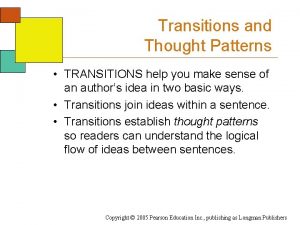ON E 0 TRANSITIONS IN HEAVY EVEN EVEN


















































































- Slides: 82

ON E 0 TRANSITIONS IN HEAVY EVEN – EVEN NUCLEI VLADIMIR GARISTOV, A. GEORGIEVA* Institute for Nuclear Research and Nuclear Energy, Sofia, Bulgaria, garistov@mail. ru *Institute of Solid Physics, Sofia, Bulgaria This work was partially supported by the Bulgarian National Foundation for Scientific Research under Grant Number № ДФНИ-Е 02/6 Sofia 2015

Scenario: To make You familiar with our approaches for the classification of the excited states energies with Jp = 0+ in the same nucleus Parabolic distribution and classification of the excited states within the Interacting Vector Bosons Model (IVBM) : energies with the same set of model parameters and also the estimation of the E 0 transition probabilities in this two approaches. Sofia 2015

Sofia 2015

Distribution function n

Exploration of the energy distributions of excited states with arbitrary Jp in the same nucleus Parabolic distribution En = a n – b n 2 +C In the case of Jp = 0+ C=0 Редкоземельные элементы: 58 Ce 60 Nd 62 Sm 64 Gd 66 Dy 68 Er 70 Yb Актиниды: 90 Th 92 U 94 Pu 96 Cm 98 Cf 100 Fm 102 No

Dy isotopes En = a n – b n 2


114 Cd

118 Sn

132 Ba

156 Gd

2. 9460 0(+), 1, 2, 3+ 3. 1789 0(+), 1, 2, 3(+) 3. 2120 0(+), 1, 2, 3+ 3. 3476 0(+), 1, 2, 3+ 3. 5050 0(+), 1, 2, 3+ 3. 5425 (0+), 1, 2, 3, 4(+) 3. 5590 0(+), 1, 2, 3(+) 3. 5795 0+, 1, 2, 3, 4+ 3. 6500 (0+), 1, 2, 3, 4(+) 3. 6985 (0+), 1, 2, 3, 4(+) 3. 8485 0(+), 1, 2, 3+ 3. 8595 0(+), 1, 2, 3(+) 3. 99254 0(+), 1, 2, 3+ 4. 0086 0(+), 1, 2, 3(+) 136 Ba Ambiguous spins data + 0 ? ? D = 1. 46471 Ke. V

We also had a chance to drag into this affair the experimentalists from JINR - Dubna: Adam J, Solnyshkin A. A. Islamov T. A. and ITEP – Moscow: Bogachenko D. D. , Egorov O. K. , Kolesnikov V. V. , Silaev V. I. . As a result – trusting in our predictions the two new 0+ states in 160 Dy has been observed.

Time to blow ones own trumpet


Observed transitions in 160 Dy 2503. 8 2+ 2297. 5 1952. 3 g 1594. 5 Ig=0. 8 K 1271. 0 IK=0. 024 0+ 0+ g 1822. 5 Ig=0. 24 2+ 0+ 0+ 2+ g 616. 2 0+ 160 Dy K 703 IK=0. 086 K 681. 3 IK=0. 024 g 594. 5 1708. 2 1456. 7 1280. 0 703. 0 681. 3 86. 8 0. 0 Adam J et. al. (2014) Bulg. J. Phys. } 41, 10– 23. Sofia 2015

Why did we impose the restrictions positive and integer classification parameter? To draw attention of theoreticians that work with the application of the group theory in nuclear physics Ana Georgieva, Michael Ivanov, Svetla Drenska, Nikolay Minkov, Huben Ganev, Kalin Drumev We found a suitable approach Interacting Vector Bosons Model (IVBM) Sofia 2015

Interacting Vector Bosons Model (IVBM) Peter Raychev, Roussy Roussev, Ana Georgieva Philosophy of this approach Georgieva A I, Raychev P and Roussev R, (1982) J. Phys. G: Nucl. Phys. , 8, 1377. Ganev H G, Garistov V P, Georgieva A I and Draayer J P, (2004), Phys. Rev. , C 70, 054317. Solnyshkin A A, Garistov V P, Georgieva A, Ganev H and Burov V V (2005) Phys. Rev. , C 72, 064321. Georgieva, A. I. , Ganev, H. G. , Draayer, J. P and Garistov V. P. , Physics of Elementary Particles and Atomic Nuclei, 40, 461 (2009). Garistov V P, Georgieva A I and Shneidman T M, (2013), Bulg. J. Phys. , 40, 1– 16 Adam J et. al. (2014) Bulg. J. Phys. } 41, 10– 23.



sp(4, R) and su(3) algebras are related through the u(2) su(2) u(1) algebra of the pseudo spin T, which is the same in both chains.


Classification of the excited states energies with arbitrary Jp within the same set of model parameters and also the estimation of the transition probabilities IVBM confirmed it’s advantages in description of the rotational bands energies. To bind our new clssification to the predetermined parameters obtained from the description of rotational bands’ energies To make the analysis of the structure of low lying excited states we need the description of several rotational bands.

Band’s energies Here K and N 0 marks the belonging to rotational band type

Band’s heads energies Here N 0 specifies the corresponding rotational band head’s type


Rotational β - band energies β - type band’s heads energies Here N 0 specifies the position of rotational band head N 0 = 2 , 4, 6, 8, …


IVBM


Band’s head energy

Garistov’s approach IVBM


Band’s head energy

IVBM 0+ states energies From b band 160 Gd



Band’s head energy Here N 0 specifies the corresponding rotational band head’s type and for Jp N 0 = 2 , 4, 6, 8, … = 0+

Parabola IVBM


Band’s head energy Here N 0 specifies the corresponding rotational band head’s type and for Jp N 0 = 2 , 4, 6, 8, … = 0+

IVBM 0+ states energies 160 Gd From b band


Band’s head energy


168 Yb

0+ a = 0. 485916 b = 0. 0275156 D=0. 002 Me. V E 0+ = a n – b n 2 IVBM 0+ states energy distribution 168 Yb






T a h k n ! u o Y


Band’s heads energies Here N 0 specifies the corresponding rotational band head’s type





3 beta 2++ 1 - gamma 2+



beta 2+ gamma 2+

Dy isotopes En = a n – b n 2 +c

160 Gd IVBM 2+ states energies From b band From g band

156 Gd IVBM 2+ states energies From g band From b band

152 Gd 2+ states


gamma beta

2→ 0 r 2/2000 DN=N DN=2 4→ 0 6→ 4 4→ 2 2→ 0 6→ 0 8→ 0

2+ beta 2+ gamma






N 0=4 N 0=0 N 0=10

Ambiguous Spin Data 168 Yb 2+ E 2+ = a n – b n 2 + c a = 0. 55132 b = 0. 0266917 c = - 0. 450742 D = 0. 002 Me. V

beta 2+ gamma 2+

3 beta 2++ 1 - gamma 2+

Ambiguous Spin Data 168 Yb 2+ E 2+ = a n – b n 2 + c a = 0. 55132 b = 0. 0266917 c = - 0. 450742 D = 0. 002 Me. V 168 Yb g type 2+ states b type 2+ states Ground band 2+ state

mutual complementarity of sp(4, R) with the so(3) sp(12, R) sp(4, R) so(3) ∩ u(6) u(2) su(3) sp(4, R) and su(3) algebras are related through the u(2) su(2) u(1) algebra of the pseudo spin T, which is the same in both chains. This permits an investigation of the behavior of low lying collective states with the same angular momentum L in respect to the number of excitations N that build these states.
 Ratey rational functions
Ratey rational functions Recursive definition of language in automata examples
Recursive definition of language in automata examples Regular expression of even even language
Regular expression of even even language Elaboration transition words
Elaboration transition words Gregory is my beautiful gray persian cat
Gregory is my beautiful gray persian cat Vertical blinds
Vertical blinds Transitions for thesis statements
Transitions for thesis statements Great transitions the origin of tetrapods
Great transitions the origin of tetrapods Coordinators subordinators and transitions
Coordinators subordinators and transitions Transition words for 6th graders
Transition words for 6th graders How to imbed quotes in an essay
How to imbed quotes in an essay Melcon template
Melcon template Grado 3 movie
Grado 3 movie Laporte rule
Laporte rule Tlq transitions
Tlq transitions Transitions for descriptive essays
Transitions for descriptive essays Logical transitions
Logical transitions Script writing elements
Script writing elements Transitions for conclusions
Transitions for conclusions What's font
What's font Born oppenheimer
Born oppenheimer What are transitions?
What are transitions? Mel con format
Mel con format What holds paper together
What holds paper together Mel-con paragraph
Mel-con paragraph What are transitional devices
What are transitional devices William bridges transitions model
William bridges transitions model Iteration workflows in software project management
Iteration workflows in software project management Finite automata with epsilon transitions
Finite automata with epsilon transitions Christine weller
Christine weller Rame tep meaning
Rame tep meaning Is now a time order word
Is now a time order word Effects of transitions in early years
Effects of transitions in early years Rabia transitions
Rabia transitions Transition to thesis statement example
Transition to thesis statement example National transitions of care coalition
National transitions of care coalition Conjunctive adverb examples
Conjunctive adverb examples Transition words in an argumentative essay
Transition words in an argumentative essay Transitions for rhetorical analysis
Transitions for rhetorical analysis Asian transitions in an age of global change
Asian transitions in an age of global change Subir sachdev quantum phase transitions
Subir sachdev quantum phase transitions Ophiuchus cluster explosion
Ophiuchus cluster explosion Heavy atom
Heavy atom Sqed
Sqed Heavy vehicle recovery wagga
Heavy vehicle recovery wagga Heavy damping
Heavy damping Heavy connotations
Heavy connotations Heavy equipment safety checklist
Heavy equipment safety checklist Vowels in arabic
Vowels in arabic Sac heavy airlift wing
Sac heavy airlift wing Heavy atom
Heavy atom Stupňování přídavných jmen angličtina high
Stupňování přídavných jmen angličtina high Heavy-gauge framing members are manufactured from
Heavy-gauge framing members are manufactured from Heavy ions
Heavy ions Heavy duty truck axle repair
Heavy duty truck axle repair Used to trim threads two handles same size
Used to trim threads two handles same size Heavy object
Heavy object Heavy rectangular knife used by butchers
Heavy rectangular knife used by butchers Adjective comparative superlative heavy
Adjective comparative superlative heavy Is density how heavy something is
Is density how heavy something is Tlik2003
Tlik2003 Hydraulic machines move heavy loads in accordance with
Hydraulic machines move heavy loads in accordance with I am 160 cm tall
I am 160 cm tall Gas 101
Gas 101 How heavy something is compared to its volume
How heavy something is compared to its volume It is a copper-cored cable surrounded by a heavy shielding
It is a copper-cored cable surrounded by a heavy shielding Heavy elements formed
Heavy elements formed A symmetrical top
A symmetrical top B heavy molasses
B heavy molasses Snap heavy duty concentrate
Snap heavy duty concentrate A ball rolling down an incline has its minimum speed
A ball rolling down an incline has its minimum speed Heavy metal pollution
Heavy metal pollution Heavy atom
Heavy atom Beautiful adverb
Beautiful adverb Hyundai heavy industries investor relations
Hyundai heavy industries investor relations Heavy water
Heavy water Come unto me all who are weak weary and heavy laden lyrics
Come unto me all who are weak weary and heavy laden lyrics Heavy ions
Heavy ions A heavy colorless gas
A heavy colorless gas Heavy komparativ
Heavy komparativ Heavy duty truck systems
Heavy duty truck systems Heavy growth of coliform
Heavy growth of coliform Prolan heavy
Prolan heavy




